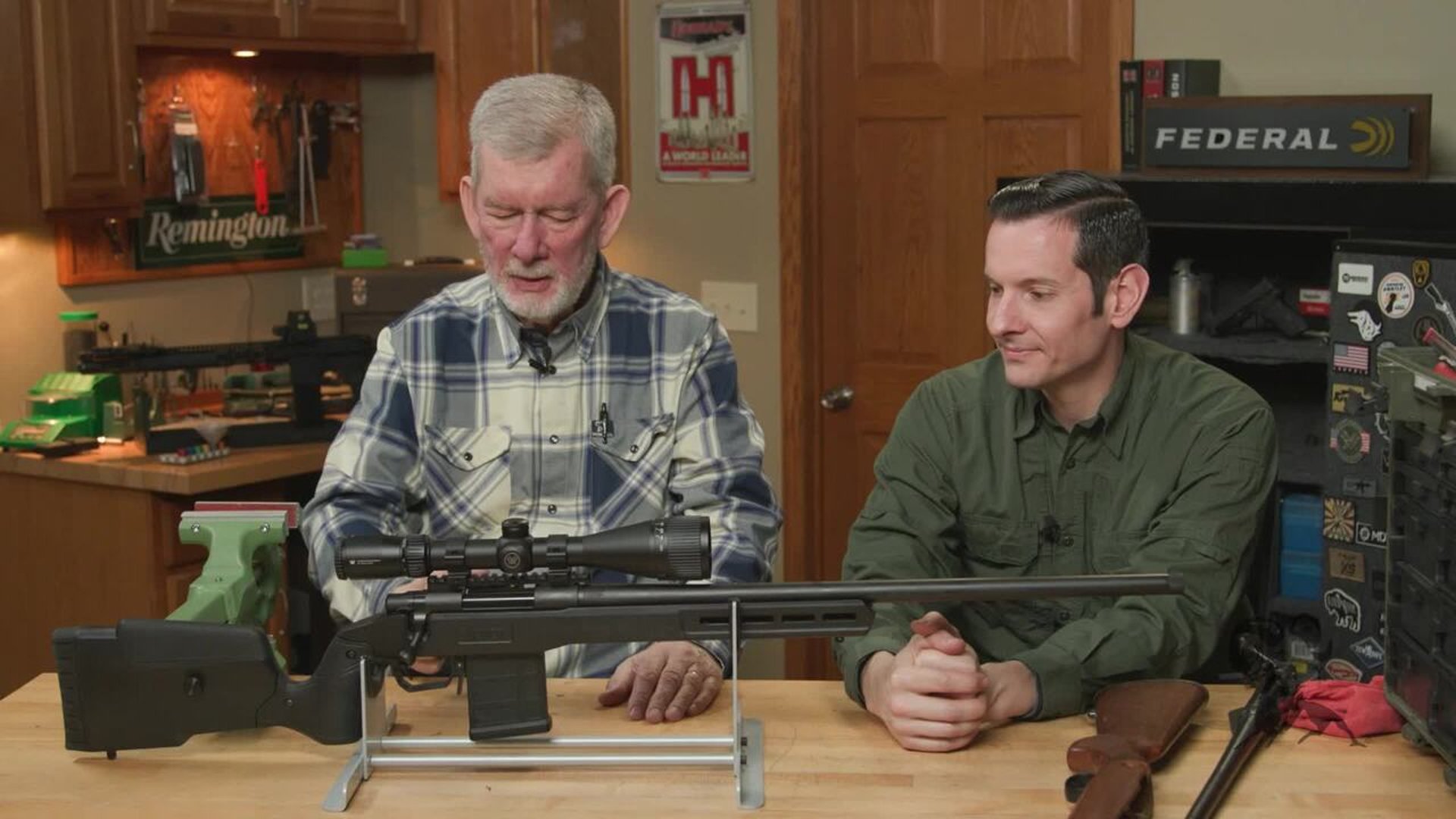Quick Tip: What Affects Rifle Accuracy
Caleb and Steve from Brownells sit down to tackle a question every shooter has faced at some point – why isn’t my rifle shooting as accurately as it should? Whether it’s a gun that never grouped well or one that suddenly started performing poorly, there are some common culprits you can troubleshoot before blaming the rifle itself.
What You Will Learn
By watching this video, you’ll learn how to systematically diagnose and fix rifle accuracy issues without immediately replacing parts. Caleb and Steve walk through a practical checklist covering optics mounting, action screws, stock fit, ammo compatibility, parallax settings, muzzle crown condition, and trigger performance. You’ll gain insight into how small, often overlooked factors—like loose screws or improper cleaning—can impact your rifle’s accuracy, and how to correct them for better shooting results.
Benefit
The benefit of this video is that it helps shooters save time, money, and frustration by showing how to identify and fix common accuracy problems without unnecessary upgrades. Instead of guessing or replacing expensive components, viewers learn a step-by-step approach to troubleshooting that can restore rifle performance with simple, practical fixes.
Intro and what causes accuracy issues
Sometimes a rifle that used to group well suddenly opens up. Other times, it’s never shot right from the start. Caleb and Steve explain that the first step is to go through a checklist of the basics, not jump straight into swapping optics or re-barreling.
Checking scope rings and fasteners
One of the most overlooked causes of poor accuracy is loose scope rings or mount screws. If your optic shifts under recoil, your zero will move. Steve recommends checking that everything is properly torqued and secured, especially if the gun has been in storage or taken a bump.
Action screws and stock fit
Next up are the action screws. If they’re not tight or evenly torqued, your receiver can shift slightly under recoil, throwing off consistency. Caleb points out that some stocks can compress or shift over time, which can also introduce movement between the receiver and stock.
Ammo compatibility and consistency
Ammo matters more than people think. Steve reminds viewers that not all guns like all loads, even if they’re the same caliber. A rifle might shoot one brand or bullet weight very well, and group terribly with another. Don’t judge the rifle until you’ve tested a few different loads.
Parallax adjustment and scope setup
Caleb explains that parallax errors are a big factor in poor groups, especially with magnified optics. If your scope has a parallax adjustment and you’re not using it correctly, your point of impact can shift with eye position. Set it for your target distance and keep a consistent cheek weld.
Bedding the stock
If your rifle isn’t bedded correctly, accuracy will suffer. Bedding creates a solid, repeatable interface between the action and the stock. Steve notes that some factory stocks lack proper bedding or use flexible materials that can shift. Proper bedding can tighten groups significantly.
Peep sights and sight clarity upgrades
For rifles without optics, peep sights offer a huge upgrade in clarity and precision over standard notch-and-post setups. Caleb recommends these for lever actions, military surplus rifles, or anything where a red dot or scope isn’t ideal.
Red dots for shotguns
On shotguns, especially slug guns or turkey guns, red dots can provide faster target acquisition and more consistent accuracy than traditional bead sights. Steve mentions that this is a great upgrade heading into hunting season.
Crown damage and its effects
The muzzle crown is the last thing your bullet touches before it leaves the barrel. Any damage or uneven wear here can ruin accuracy. Caleb advises inspecting the crown carefully and having it re-cut by a gunsmith if needed.
Cleaning rods and barrel wear
Be careful how you clean your barrel. Caleb warns that metal cleaning rods can damage the crown or throat if used improperly. Always clean from the breech when possible, and use coated rods or bore guides to protect your barrel.
Caliber choice and recoil management
Steve brings up caliber selection, especially for newer or smaller-statured shooters. If a rifle is beating you up with recoil, you’re less likely to shoot it well. A milder caliber like 6.5 Creedmoor offers great ballistics and manageable recoil, which leads to better performance.
Copper fouling and how to clean it
After many rounds, copper fouling can build up in the barrel and affect accuracy. You’ll notice groups opening up, often gradually. Use a copper solvent and follow up with a good cleaning to restore consistency.
Trigger pull weight and shooter influence
Finally, Steve talks about trigger pull weight and how it affects accuracy. A heavy or gritty trigger can make it hard to break the shot cleanly, especially at distance. Caleb recommends upgrading to a better trigger if everything else checks out and groups are still wide.
Factory vs aftermarket trigger upgrades
Factory triggers can be inconsistent or heavy, and many rifles benefit from an aftermarket unit. A smoother, lighter pull helps reduce flinching and improves shot timing, particularly for new shooters or precision applications.
Final Thoughts
If your rifle isn't shooting well, don’t panic. Work your way through the basics—check your hardware, verify your ammo, inspect your optics, and evaluate your shooting habits. Most accuracy issues aren’t caused by bad barrels, but by small, fixable details.
Use this checklist before making big changes, and you’ll likely find the source of your problem without wasting time or money.
rifle accuracy troubleshooting, why is my rifle not accurate, rifle accuracy tips, scope screws loose, how to bed a rifle stock, crown damage rifle, rifle trigger pull issues, Brownells Quick Tip, hunting rifle setup, copper fouling barrel, scope parallax explained, ammo selection accuracy, peep sight upgrade, rifle recoil control, lever action accuracy tips, rifle shooting problems








